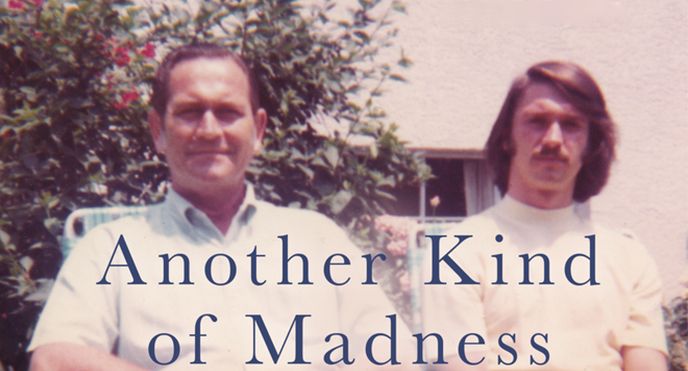By Stephen Hinshaw

Mental illness has truly come out of the closet, right? In fact, mental health issues seem to be discussed everywhere these days, from neighborhood chats to social media. A number of enlightened television programs have come on board in recent years—think, for example, of Carrie in Homeland. At least on the coasts, disclosure of seeking a ‘shrink’ or even taking psychoactive medication is commonplace.
Six consecutive decades of research reveal that the average person in the U.S. knows far more, factually, about mental disorder than during the silent 1950s. Psychology courses in high schools, plus more extensive media coverage, are undoubtedly part of the changing picture here.
Yet appearances are deceiving. Although public knowledge of mental health has increased sharply over the past 60 years, public attitudes have either stayed flat or, in crucial ways, become worse. Three times more people now believe that mental illness is inevitably associated with violence than in the 50s, bespeaking the stereotypes too often portrayed throughout society. Even more, in a number of states, admitting to a mental illness negates renewal of your driver’s license, prevents running for office or serving on a jury, and all too often ensures loss of child custody. My history of depression—or yours of an eating disorder—costs you such rights? All this would be shocking were it not so ingrained in our culture and legal practices.
The stakes are high. Mental illness is not rare but actually quite common. For serious forms, those without proper treatment perish, on average, 10-20 years short of typical life expectancy. Relationships and job performance suffer, too often leading to personal and family tragedy. If you’ve experienced mental disorder personally or in someone close to you, you’ll know just what I mean.
Yet if evidence-based treatments are sought and received, the picture becomes far brighter. Although cures are not yet at hand, interventions for mental illness, in terms of both medication and psychological therapies, reduce symptoms and promote far healthier functioning.
When I was a boy back in the Midwest, my father—a warm, brilliant philosopher—periodically disappeared without warning for many months, even a year at a time. My sister and I didn’t know that his doctors had forbidden my parents from discussing the real reason: his crushing episodes of madness, misdiagnosed for years as schizophrenia. Life was puzzling, even terrifying, largely because of the silence.
Here’s a bit of what I’ve written about my boyhood:
First grade had ended. I noticed that Dad wasn’t home. The air outside was warm, the pavement baking in the noonday sun. I asked once or twice but Mom said that he’d return from his trip pretty soon, maybe a few more weeks. What trip? I inquired as softly as I could, but she said nothing more. It wasn’t the first time this had happened; it wouldn’t be the last.
One afternoon in the early summer, crossing the living room toward the back porch, I stopped short. Something seemed to be hovering nearby though I couldn’t figure out what. My skin grew cool. Soon, my eyes were pulled upward as though by a magnet. With a start I saw them, near the ceiling: A string of balloons. Incredulous, blinking, I looked outside through the porch, where another strand hovered over the back yard. All those different colors!
Had there been a parade nearby, or maybe some kind of celebration? Limp and deathly still, their tight skins glistening, they stood there without a sound. As I continued staring it dawned on me that the balloons were filled with poison gas. Hidden by the stretched plastic skins, the molecules inside were pressing for release.
Was this a vision of some sort? To this day I’m not certain. But I told myself back then that if I kept my eyes focused right in front of me, my gaze pointed straight ahead, I might never see them again.
Those poison-filled balloons were a metaphor for the toxic, professionally ordered silence about mental illness that filled our family—indeed, our entire culture. When children know that something is wrong in a family but the issues are never discussed, they tend to internalize, taking on the blame themselves. Although this stance often yields a huge blow to self-esteem, it is probably better, for the child in question, than perceiving the world as a cruel, random place.
Although risk for serious mental disorder is transmitted, in part, through genes, shame and silence are also involved.
It wasn’t until I returned home for my first spring break from college that my father started to tell me of his life. I quickly became interested in psychology and mental health, though it took many years before I was open enough to get therapy and support, as I worked through the constant worry that I might follow in Dad’s footsteps. Not long after I finished college, I diagnosed him accurately with bipolar disorder, finally affording him some years of accurate treatments and peace of mind.
I went on to become a clinical and developmental psychologist, seeking causes and effective treatments for child and adolescent mental illness and fighting the stigma that still, tragically, exists both in our culture and around the world.
The cost of hiding mental illness is shame, suffering, and the cutting off of needed supports and treatments. By continuing to dehumanize people with major emotional and behavioral struggles, we rob society of its most precious resource: human capital.
To make a difference, we need contact, acceptance, support, and access to treatment. Everyone loses if we can’t deliver.

Read an excerpt of Another Kind of Madness: A Journey Through the Stigma and Hope of Mental Illness here.
Stephen Hinshaw is a professor of psychology at the University of California, Berkeley and of psychiatry at the University of California, San Francisco—and author, most recently, of Another Kind of Madness: A Journey through the Stigma and Hope of Mental Illness.
Read more at Thought Matters. Sign up for originals essays, interviews, and excerpts from some of the most influential minds of our age.
